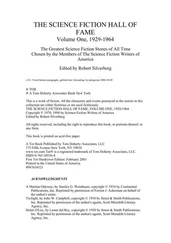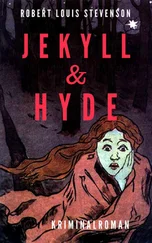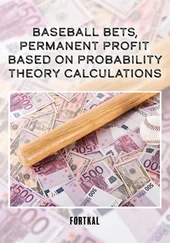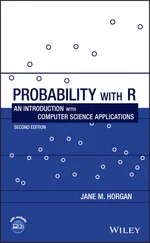5 1.35 Let , , , be three events. At least one event always occurs. But it never happens that exactly one event occurs. Nor does it ever happen that all three events occur. If and , find .
6 1.36 See the assignment of probabilities to the Venn diagram in Figure 1.5. Find the following:(No events occur).(Exactly one event occurs).(Exactly two events occur).(Exactly three events occur).(At least one event occurs).(At least two events occur).(At most one event occurs).(At most two events occur).
7 1.37 Suppose that probabilities have been assigned to the Venn Diagram in Figure 1.5as follows: , , and . Find the following:(No events occur).(Exactly two events occur).(At most one event occurs).(At most two events occur).
8 1.38 For three events , , and , the following is known: , , , and the probability of no events occurring is 0.1.Sketch a Venn diagram that matches the information provided about the three events.Find .Find .Find .
9 1.39 Four coins are tossed. Let be the event that the first two coins both come up heads. Let be the event that the number of heads is odd. Assume that all 16 elements of the sample space are equally likely. Describe and find the probabilities of (i) , (ii) , and (iii) .
10 1.40 Two dice are rolled. Let be the maximum number obtained. (Thus, if 1 and 2 are rolled, ; if 5 and 5 are rolled, .) Assume that all 36 elements of the sample space are equally likely. Find the probability function for . That is, find , for .
11 1.41 Judith has a penny, nickel, dime, and quarter in her pocket. So does Kory. They both reach into their pockets and choose a coin. Let be the greater (in cents) of the two.Construct a sample space and describe the events for Assume that coin selections are equally likely. Find the probabilities for each of the aforementioned four events.What is the probability that Judith's coin is worth more than Kory's? (It is not )
12 1.42 A tetrahedral dice is four-sided and labeled with 1, 2, 3, and 4. When rolled it lands on the base of a pyramid and the number rolled is the number on the base. In five rolls, what is the probability of rolling at least one 2?
13 1.43 LetShow that is a probability function. That is, show that the terms are nonnegative and sum to 1.Let be defined such that for Find without summing an infinite series.
14 1.44 The functionis a probability function for some choice of . Find .
15 1.45 Let , , be three events. Find expressions for the events:At least one of the events occurs.Only occurs.At most one of the events occurs.All of the events occur.None of the events occur.
16 1.46 The odds in favor of an event is the ratio of the probability that the event occurs to the probability that it will not occur. For example, the odds that you were born on a Friday, assuming birthdays are equally likely, is 1 to 6, often written or 1 to 6, obtained from (1/7)/(6/7).In Texas Hold'em Poker, the odds of being dealt a pair (two cards of the same denomination) is . What is the chance of not being dealt a pair?For sporting events, bookies usually quote odds as odds against, as opposed to odds in favor. In the Kentucky Derby horse race, our horse Daddy Long Legs was given 9 to 2 odds. What is the chance that Daddy Long Legs wins the race?
17 1.47 An exam had three questions. One-fifth of the students answered the first question correctly; one-fourth answered the second question correctly; and one-third answered the third question correctly. For each pair of questions, one-tenth of the students got that pair correct. No one got all three questions right. Find the probability that a randomly chosen student did not get any of the questions correct.
18 1.48 Suppose , , , For each of the events given next, write the event using set notation in terms of , , and , and compute the corresponding probability.At least one of the three events occur.At most one of the three events occurs.All of the three events occurs.None of the three events occurs.At least two of the three events occurs.At most two of the three events occurs.
19 1.49 Find the probability that a random integer between 1 and 5000 is divisible by 4, 7, or 10.
20 1.50 Each of the four squares of a two-by-two checkerboard is randomly colored red or black. Find the probability that at least one of the two columns of the checkerboard is all red.
21 1.51 Given events and , show that the probability that exactly one of the events occurs equals
22 1.52 Given events , show that the probability that exactly one of the events occurs equals
1 1.53 Modify the code in the R script CoinFlip.R to simulate the probability of getting exactly one head in four coin tosses.
2 1.54 Modify the code in the R script Divisible356.R to simulate the probability that a random integer between 1 and 5000 is divisible by 4, 7, or 10. Compare with your answer in Exercise 49.
3 1.55 Use R to simulate the probability of two rolled dice having values that sum to 8.
4 1.56 Explain what reproducibility means to you in a few sentences.
5 1.57 Use R to simulate the probability in Exercise 1.41 part c.
6 1.58 Use R to simulate the probability in Exercise 1.42.
7 1.59 Make up your own random experiment and write an R script to simulate it. Be sure your results are reproducible.
8 1.60 See the help file for the sample command (type ?sample ). Write a function dice() for generating throws of a fair die. Use your function and R's sum function to generate the sum of two dice throws.
Chapter review exercises are available through the text website. The URL is www.wiley.com/go/wagaman/probability2e.
Конец ознакомительного фрагмента.
Текст предоставлен ООО «ЛитРес».
Прочитайте эту книгу целиком, купив полную легальную версию на ЛитРес.
Безопасно оплатить книгу можно банковской картой Visa, MasterCard, Maestro, со счета мобильного телефона, с платежного терминала, в салоне МТС или Связной, через PayPal, WebMoney, Яндекс.Деньги, QIWI Кошелек, бонусными картами или другим удобным Вам способом.












